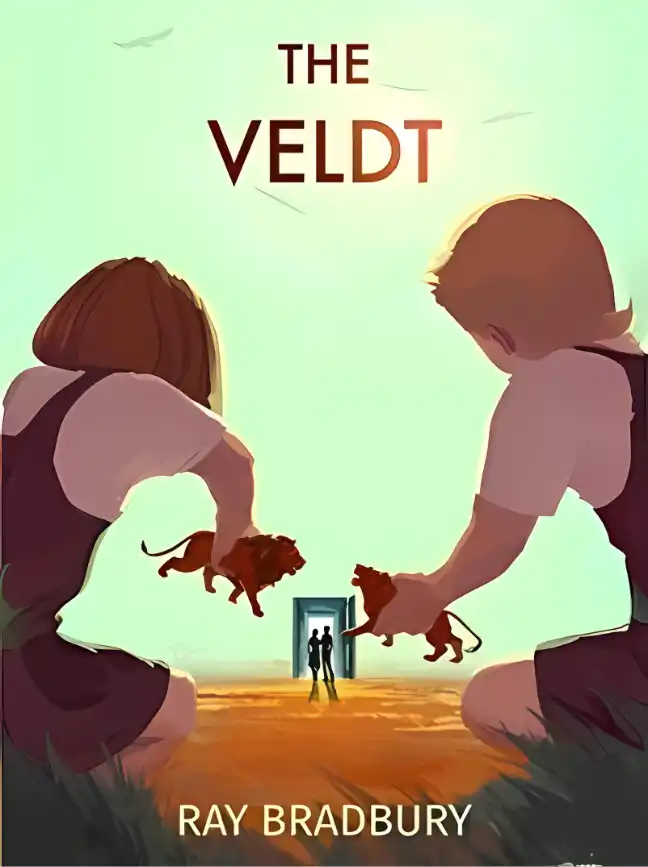Inside the National Museum of American History, Ty and Kato walked toward the exhibit marked THE COVENANT WAR.
Ty’s flashlight led their way. Behind them, hazy moonlight shone through the museum’s entrance on Constitution Avenue.
Dust lay heavy on the ground and the exhibits, a blanket laid by time, covering many of the signs. Ty wondered how long the place had been abandoned. Ten years? Twenty? Longer?
The first section of the exhibit was a series of pictures and placards with descriptions. Ty recognized the people in the historical photos: Joseph Stalin, Winston Churchill, Franklin D. Roosevelt, Benito Mussolini, and Adolf Hitler. The sign above it read PRELUDE TO WAR.
The description under the heading read:
In the years before the outbreak of the Covenant War, alliances were forged.
Ty moved his gaze to the first photo, which showed Joseph Stalin shaking hands with a younger, slightly taller man with blond hair and a black sport coat. The caption indicated that the younger man was German foreign minister Joachim von Ribbentrop. Ty read the heading and description:
GERMAN–SOVIET NONAGGRESSION PACT
August 23, 1939
Nazi Germany and the Soviet Union shocked the world by signing a nonaggression pact that forbade either nation from taking military action against the other for the next ten years. The pact also included secret details of how the two major powers would divide up Eastern Europe in the coming war.
“It’s the same as in our timeline,” Kato said.
Ty scanned the next photo and the text below:
Easter Accords April 16, 1938
In Rome, representatives from the British and Italian governments agreed to keep the existing world order and prevent Italy from aligning itself with Germany in future wars. The agreements were later registered with the League of Nations in March of 1939.
Benito Mussolini, the fascist dictator of Italy, harbored different feelings. He believed that nations with rising populations were destined to rule the world while those with falling populations would eventually be conquered. As such, Mussolini placed relentless demands on Italian women to have more children in order to reach a population of sixty million—which he believed Italy needed to win a major war.
Mussolini believed that the declining birth rates in France would eventually doom the nation and that the British Empire faced a similar fate as 25 percent of its population was over fifty years old.
Below was a picture of US president Franklin D. Roosevelt at what appeared to be a dais in front of Congress. The caption read:
The US Neutrality Acts of the 1930s
In the years after the Great War, growing isolationism and noninterventionism in the United States prompted Congress to pass a series of neutrality acts starting in 1935 and again in 1936, 1937, and 1939, with the goal of keeping the United States out of another global conflict.
“It’s still just like our timeline,” Kato said. “In our world, those neutrality acts probably prolonged the war because they didn’t distinguish between aggressor and victim. They prevented the United States from providing early support that may have helped bring the war to a conclusion.”
At that moment, Ty had the distinct impression that someone was watching him. He spun, raking the flashlight across the exhibit hall and out into the lobby.
Kato raised his gun and stepped away from the glass display case that held the photos.
“Someone’s here,” Ty whispered.
Without a word, Kato crept forward, rifle stock at his shoulder, leading the way.
In the lobby, they waited, listening.
But there was no one there. Not even a sound. “Maybe I imagined it,” Ty said.
Kato glanced up at the ceiling. “No. I felt it too. Maybe it’s just this place creaking and falling apart.”
“Maybe,” Ty mumbled.
It was clear neither of them believed that.
They returned to the exhibit, to the next section that was labeled:
WAR BEGINS
In the pictures and descriptions, Ty saw a timeline that matched the history he knew:
- July 7, 1937: War between China and Japan begins.
- September 1, 1939: Germany invades Poland.
- September 3, 1939: France and Great Britain declare war on Germany. Australia, New Zealand, South Africa, and Canada soon join in the war against Germany.
- September 17, 1939: The Soviet Union, after entering into a ceasefire with Japan, invades eastern Poland.
- May 10, 1940: Winston Churchill becomes Prime Minister of Great Britain. On the same day, Germany launches its offensive against France. In a surprise move, the Wehrmacht invades Belgium, the Netherlands, and Luxembourg, transiting the thick forests and difficult terrain of the Ardennes region and completely bypassing the extensive French fortifications of the Maginot line that run along the Franco–German border. Forty-six days later, the Battle of France is over, ending in a German victory and the surrender of France and subsequent occupation by German forces.
- June 1940: The Soviet Union forcibly annexes Estonia, Latvia, Lithuania, and various regions of Romania.
Kato pointed at the next placard, which showed a black-and-white photo of planes in the air shooting at one another over London.
“Here’s the first difference in the timeline,” Kato said. Ty quickly read the description:
- July 10, 1940: The Battle of Britain begins. In the first major military campaign fought entirely by air forces, Great Britain’s Royal Air Force (RAF) and Fleet Air Arm (FAA) defend the British homeland against a relentless assault by the German Luftwaffe. While the Luftwaffe fighters and bombers never achieve air superiority over the RAF squadrons, the tide turns decisively during the Blitz, when Germany launches a massive rocket attack known as the Night of Fire on September 15, 1940. During the Night of Fire, Germany launches 382 A4 rockets. The barrage delivers a devastating bombardment of London, destroying the British Parliament and most of the city and taking the lives of most members of parliament, including the Prime Minister, Winston Churchill. RAF bases are also nearly obliterated, including RAF Fighter Command Headquarters at Bentley Priory. A week later, Great Britain falls.
“That’s it,” Kato said. “In our time, the British survived the Blitz and won the Battle of Britain. By the beginning of September 1940, the Luftwaffe had essentially lost the battle. The Germans were desperate to turn it around. They began bombing London. Starting on September 7th, 1940, the Luftwaffe unleashed on the city, dropping bombs for fifty-six of the next fifty-seven days and nights. It was brutal. September 15th was the climax of the action—what we call Battle of Britain Day. About fifteen hundred aircraft were involved in the fighting. It was part of Hitler’s plan to force Britain to surrender or agree to peace. The plan was to break the RAF and then invade the British mainland on September 17th in what was codenamed Operation Sea Lion.”
Kato thought for a moment. “On our world, at this point in the war, Germany had conquered most of Western Europe and Scandinavia. The British Empire and the Commonwealth was the only major power left opposing them. Hitler had made several peace offers, but the British kept rejecting them. The Battle of Britain is arguably one of the most important military battles in history. If Britain had fallen, the world would be a very different place. At that moment—in the fall of 1940—they were very much alone. The Russians were still allied with the Germans. The Japanese wouldn’t bomb Pearl Harbor for two more years, and the United States’ populace was still staunchly opposed to another war. But in our time, the Luftwaffe never broke the RAF or the British people. They held strong on
September 15th, and Hitler had to cancel Operation Sea Lion. The Germans never invaded the UK.”
Ty shook his head. “How in the world do you remember all this?”
“I told you. I like history.” Kato pointed at the placard. “But it’s different here. During the Blitz in our time, Germany fought with bombers and fighters. They didn’t have any ballistic missiles capable of striking deep into Great Britain.” He pointed at the display case. “Here they had A4s— and a lot of them. In our time, the A4 missiles weren’t used in the war until September of 1944—almost four years after Battle of Britain Day—what they call the Night of Fire here.”
“I’ve never heard of the A4.”
“Sure you have,” Kato said. “You’ve just heard its other name: the V-2 rocket.”
“The A4 is the V-2?”
“One and the same. The A stands for ‘Aggregat.’ That was the internal name for the program, which started with the A1, a rocket designed by Wernher von Braun in 1933.”
“Him, I’ve heard of. He was moved from Germany to the US after World War II, where he invented the rockets that took the Apollo spacecraft to the Moon.”
“Indeed. His work at NASA was sort of the culmination of the research he began in Germany. Von Braun, along with Walter Dornberger and Walter Riedel, began working on rockets in the 1930s at Kummersdorf—an estate south of Berlin. They developed the A1, A2, and A3 at Kummersdorf before they moved the research to Peenemünde on the island of Usedom on the Baltic coast. They had more space there, and it was harder to spy on. The A3 was the first Aggregat rocket to launch at Peenemünde. They used Kummersdorf for nuclear research, starting in 1938.
“At Peenemünde, the Aggregat program made incredible progress. They had several different rockets in development—including the A10, which was designed to reach the continental United States. As early as 1940, the Germans were actively working on the A10, which they projected could hit America by 1946. But the A5 is when the Aggregat rocket series gets interesting. A lot of its components were reused in the A4—which was actually launched after the A5 and, again, became known as the V-2 when it was used in the war. In our world, the A4 first flew in March of 1942, and it didn’t fly far—about a mile before it crashed in the water. But by October
3rd of 1942, the A4 was flying one hundred twenty miles and reaching an altitude of fifty-two miles. They put the missile into production in 1943, and as I said, in our time, they launched it in the war in September of 1944. But here, in this time, they had them four years earlier, and look at the difference it made.”
Kato nodded toward the display case. “Those A4—or V-2—rockets turned the tide in the Battle of Britain. They enabled the Germans to defeat the British. Someone in this timeline must have pushed harder in the 1930s at Kummersdorf and Peenemünde. They had the foresight to know how important those rockets would be to world history.”
“Or someone told them,” Ty said, his gaze drifting up to the sign that read THE COVENANT WAR.
“Meaning?”
“Meaning this world might be like ours in one important way—history is not what it’s supposed to be.”
“What are you saying?”
“Consider the idea that there’s an unseen hand at work here, forcing progress, like in the German rocket program, progress to some end we don’t yet understand. I’m not saying we know that for sure. But what I do know is that there is a common thread running between this world and ours, and it leads directly to the Covenant.”








